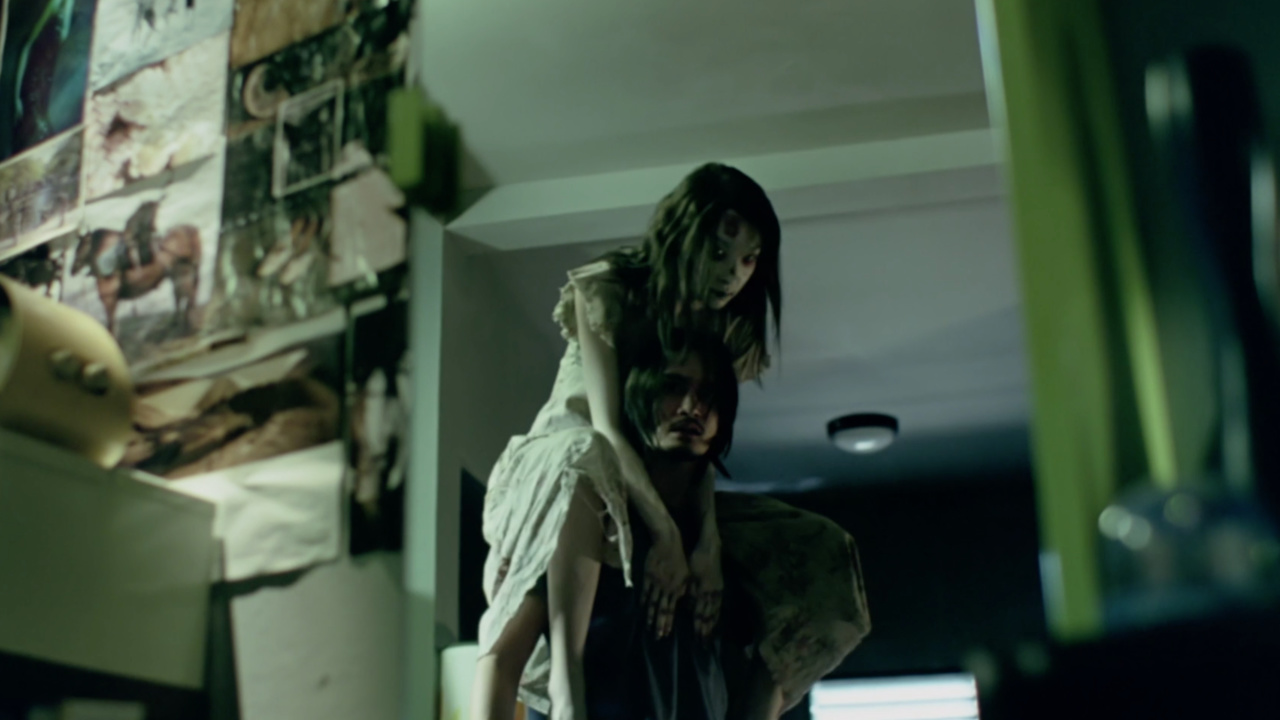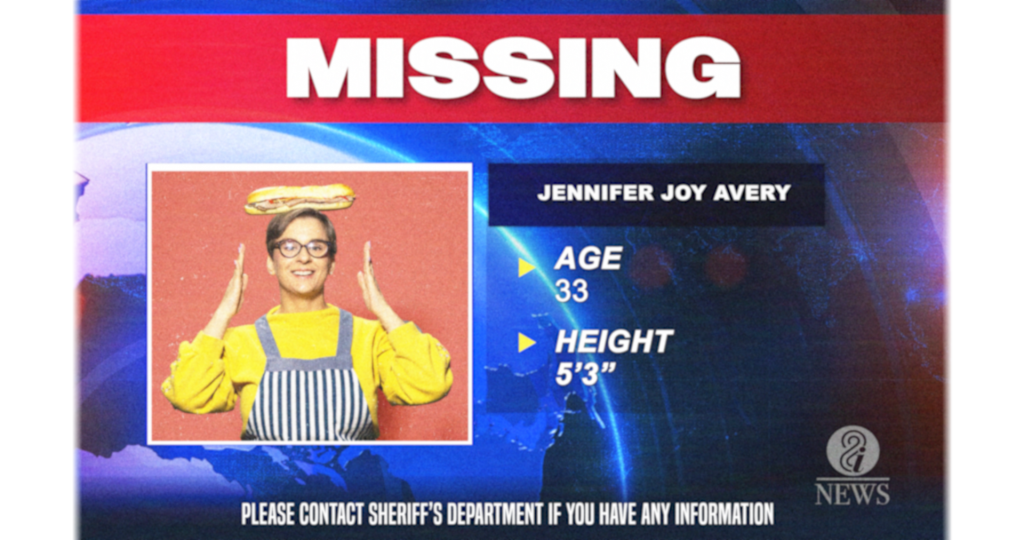Reviews
[REVIEW] ‘Silent House’ (2011) Could Have Made More Noise
Silent House (2011) is beyond frustrating and limits itself in every aspect by forcing itself into a corner. With bad acting, abysmal lighting, an unfortunate script, and a gimmick that has no payoff, Silent House should have stayed quiet forever.

Horror is no stranger to gimmicks. From the use of 3-D to make it look like an eye is plopping out of the screen into your lap, the “tingler” gimmick from William Castle’s The Tingler (among many of his gimmicks), to the lesser-used gimmick: the one-shot. Out of all the gimmicks used to make a film stand out, the one-shot/one-take hasn’t been utilized as much as it could have been. One of the best examples is the opening shot from 2017’s One Shot of the Dead. Besides Rope, one-take horror films don’t really exist. That was until the 2010 Uruguayan film La Casa Muda. Was this film spectacular? No. Was it actually shot in one take? Definitely no. Was it fresh and interesting? Without a doubt.
With a timeframe turnaround that can only be compared to the Speak No Evil remake, La Casa Muda would be remade one year later by the team from 2005’s pulse-pounding Open Water. In typical American remake fashion, nearly everything that worked for La Casa Muda would be reworked and retooled.
Silent House follows Sarah (Elizabeth Olsen) and her father John (Adam Trese) as they arrive at their family lake house to repair it and pack it up for a future sale. Sarah’s uncle Peter (Eric Sheffer Stevens) is at the house doing some repairs. The windows are boarded up from people breaking in, and the house lacks power, so the three must exist within the home by lamplight. It soon becomes clear that things are far from what they seem when a supernatural intruder locks itself in with them. “Based on a true story,” Silent House tells its tale in a “single 86-minute shot.”

It’s important to rip the bandaid off fast. Silent House is not a good film. From the very first time Uncle Peter holds the door open for the camera, to Elizabeth Olson’s final breathy performance, Silent House becomes frustrating at the fault of its gimmick. Anyone with a modicum understanding of editing could see the awful cuts in this film. Turning the camera incredibly fast to hide a cut or filling the frame with nothing but black is amateurish and frankly embarrassing. One of the best aspects of La Casa Muda is how they hide their cuts, and even though it’s done in similar ways, it’s done better.
For some reason, Silent House decided to switch up the story a little. Rather than a story that lends ambiguity until a pivotal moment, a la La Casa Muda, Silent House decides to throw so many clues your way that you’ve guessed the ending by about 20 minutes in. The performances don’t help this film at all, either. Sophia’s (Julia Chan) entrance is supposed to be ambiguous, but still ominous. Instead, Chan hams up a performance as if she was supposed to be the film’s lead. On top of that, Elizabeth Olson seems to think her performance hinges on how heavily she can breathe for 86 minutes.
La Casa Muda is lit similarly, with a lamplight, but it’s impressive how using a different bulb can make such a difference in the lighting and image quality. In Silent House, Elizabeth uses a warm-toned orange bulb, which doesn’t mesh with how it’s filmed. Conversely, La Casa Muda uses a harsh white bulb that adds a blue tinge to the image and, most importantly, LETS YOU SEE WHAT THE HELL IS HAPPENING.
Silent House was the first film I bought in my first semester of college when my major was initially supposed to be film. When I was thinking of what haunted house movies to talk about for October, this was one of the first that came to mind. The pretentious film bro Brendan hated this movie. At that point, I thought the gimmick was cheap and lazy, but I was also experiencing films like Chinatown and The Godfather. Current me was sure I had misremembered this film and hoped I was just being too film-bro-y when I first watched it. All I can say is, that 2012 me was right.
Silent House (2011) is beyond frustrating and limits itself in every aspect by forcing itself into a corner. With bad acting, abysmal lighting, an unfortunate script, and a gimmick that has no payoff, Silent House should have stayed quiet forever.
Reviews
‘Shutter’ (2004) Review: Is Aughts-ful

The aughts were the wild wild west when it came to remakes and reboots. One subgenre that excelled in striking fear into the hearts of North Americans was unquestionably J-horror. It was a craze that gave a 10-ish-year-old me nightmares for too much of my childhood. Out of all of the J-horror remakes that frightened me, the one I never got around to checking out was Shutter. Which is what I was initially going to open this review with. That was until I realized that Shutter wasn’t a J-horror remake! Talk about egg on my face!
A Haunting Tale in Japan
Shutter follows Ben Shaw (Joshua Jackson), a seasoned photographer who moves to Japan with his new wife Jane (Rachael Taylor). Their first night in Japan gets off to an awful start when Jane runs over a mysterious woman at night. Jane starts seeing this mysterious woman throughout her daily life, and Ben’s photos become unusable when a spirit takes them over one by one. Is this spirit coming after Ben and Jane for the accident? Or, is this spirit haunting them for a more sinister reason?
This hastily assembled remake is directed by Masayuki Ochiai and written by Luke Dawson. After Shutter, Dawson’s only other notable script would be the 2015 flop The Lazarus Effect. Which is what I was initially going to write until I learned that The Lazarus Effect brought in nearly $40 million at the box office. It’s difficult to say what the worst part of Shutter is, but the script is definitely at the top of that list. Not only is the script boring and bereft of any real terror, but the characters are beyond flat. Even without having seen Shutter (2004), it was clear what direction this film was taking, and any suspense that could have existed flew right out the window.
Failed Cultural Commentary
Dawson’s script attempts to take a look at white people forcibly inserting themselves into a culture and making it all about themselves. But it’s such a surface-level observation and handled with the care of a five-year-old’s crayon drawing that it’s nearly laughable. At the very least, Shutter does succeed at being a good-for-her film. And for that, I can tip my hat.
Director Masayuki Ochiai and cinematographer Katsumi Yanagijima fail to explore any space in any meaningful way. Japan is a beautiful location, and it’s completely wasted throughout this film. The only really visually interesting moment is the well-choreographed car crash. From there, things quickly go downhill. I’m sure there’s a way to make a film about spirit photography feel interesting and scary, but this is definitely not the right approach.
Shutter is a Forgettable Horror Flop
I’ve covered a lot of films during my tenure at Horror Press that I’ve never seen before. It’s a gamble I’m happy to risk. Whether they hit or miss doesn’t usually matter to me. For some reason, I held Shutter in high regard. I thought people were over the moon for this film. I suppose I can add this to my list of films, such as The Barrens and Warm Bodies, as ones I could easily consider a complete waste of time.
Reviews
Brooklyn Horror Film Festival 2025: ‘Buffet Infinity’ Review

Within the found footage subgenre exists an even more niche and untapped market. Screen life has slowly overtaken found footage; hardcore fans, like myself, ache for something different. One of the more interesting sub-subgenres of found footage is something that I don’t think has a name yet, so let’s name it here and now. How about…TV-gone-rogue! The TV-gone-rogue subgenre is small. Ghostwatch got the ball rolling for these gone rogue-like films, but there was radio silence for quite some time. It would be Chris LaMartina’s WNUF Halloween Special that really brought this idea back into the limelight. Many filmmakers have tried to make TV-gone-rogue interesting, and many have failed. That is until Simon Glassman stepped onto the scene with Buffet Infinity.
Buffet Infinity: A Chaotic Tale of Westridge
The town (city?) of Westridge is whisked into chaos when the new Buffet Infinity restaurant rolls into town. Local sandwich shop owner Jennifer Avery (Allison Bench) is the first to take the soon-to-be conglomerate to task with increasingly pointed advertisements. Suddenly, local restaurant owners/workers go missing in droves as Buffet Infinity expands into neighboring businesses. Sinkholes, missing cityfolk, quarantines, and mysterious sounds abound, leaving residents to ask one question…who really has the sauce?
On the Brooklyn Horror Film Festival schedule, the header image for Buffet Infinity shows multiple people T-posing and floating in the sky. I was immediately sold. I had no clue what I was getting into, and I didn’t want to know. The film was introduced as “one of the craziest we have this year.” (Slightly paraphrasing.) What was I about to watch? Little did I know, it was about to be an hour and forty minutes of small-town madness.
Writers Allison Bench and Elisia Snyder, and writer-director Simon Glassman, transport viewers into an upside down world of weaponized local ads; a thriving town invaded by the deep pockets of monopolized capitalism. As someone who grew up in a decently sized town, though probably not large enough to be considered a city, there was a tinge of nostalgia that accompanied Buffet Infinity. Westridge feels cozy and intimate, a town where everyone knows your name. It’s a “baked in a buttery flaky crust” town. Sure, they have their McDonald’s and Burger Kings, but the real townsfolk eat at Jennifer’s sandwich shop–local knitting circles murmur about what they think is in Jennifer’s secret sauce. Simply put, Westridge feels like a home that many people like myself grew up in. And it reminds us of a simpler time that’s long gone.

A Unique Blend of Humor and Eldritch Terror
Buffet Infinity hides its horror well. It slowly guides the viewer into a sense of unease. As easily as the creators have you laughing, they have you squirming. The absurdist joy quickly transforms into Eldritch terrors from beyond. Many filmmakers say they’re inspired by the idea of it’s-not-what-you-see that’s scary, but many times it feels performative. Bench, Glassman, and Snyder have crafted a truly special script that edges you with terror and excitement. They constantly push you to the edge of release, and then back away. It’s the Japanese water torture of exposition. And, for me, it works incredibly well.
One of the most important aspects of Buffet Infinity is the over-capitalization of our lives. While the creators tackle this idea in a tongue-in-cheek manner, their message is highly effective. For the most part. This constant tete-a-tete between Buffet Infinity and the locals is highly amusing, but brings a larger conversation to the forefront. The town I grew up in is a shadow of what it once was. And I know many feel the same about the towns they grew up in. I can already hear the moans of people who dislike this film: “Brandon, it’s not that deep.” And I would highly disagree. Buffet Infinity feels like a reflective protest film–a loud and proud middle finger at what we should have said when the Super Walmart put mom and pops out of business.
Sorry, this review has gone off the rails. Let’s reel it back in a bit.
Why Buffet Infinity Redefines Found Footage
Buffet Infinity is a riotous romp, a hilarious horror that goes from zero to 100 pretty damn fast. Each commercial slowly builds on its last and uniquely tells its story. This film sets a new precedent for the TV-gone-rogue subgenre. Not to directly compare, but a film like WNUF Halloween Special (a film I love) uses its commercials as a coda; it’s a separation of what you saw/heard and prepares you for the next movement. Buffet Infinity uses its commercial to create the story. Instead of watching news pieces, then irrelevant commercials, then back to news pieces, Buffet Infinity breaks the mold. Hell, it creates the mold.
As someone who has been dying to see a Welcome to Nightvale film, Buffet Infinity is the closest thing I could ask for. It is full of killer performances (looking at you, Ahmed Ahmed), is well-crafted, and sets a new precedent on an underutilized side of found footage. Buffet Infinity is a full-course meal. I highly suspect that Buffet Infinity will gather the unwavering support that Hundreds of Beavers gathered and will go on to be considered an instant classic of the 2020s.























